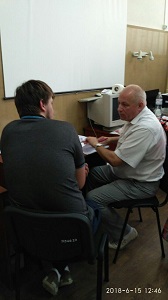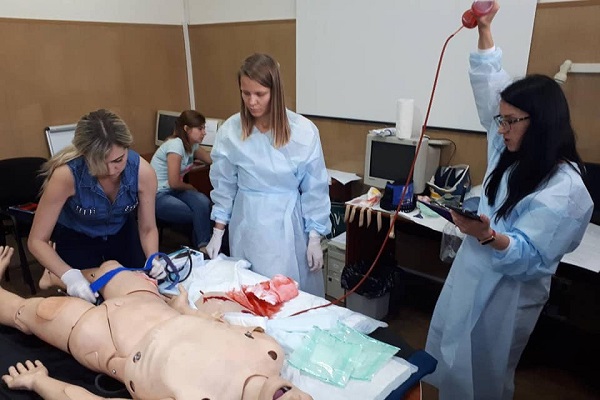Modern requirements for the training of future medical professionals are due to the integration of Ukraine into the international educational community and the reform of the health care system; they require the implementation of modern international medical and educational standards in the educational process.
Modern requirements for the training of future medical professionals are due to the integration of Ukraine into the international educational community and the reform of the health care system; they require the implementation of modern international medical and educational standards in the educational process. Among the latter, the evaluation of knowledge and the level of their practical training is important, in order to improve the level of professional competence of native practitioners.
For this purpose, on the 15th of June, 2018 at the Department of Anesthesiology and Intensive Care Shupyk NMAPE, the Fellows of the second year of study passed the OSKI Exam (ОSCE) ˗ objective structured exam. This is a standard method for determining the competence and clinical skills of doctors in the United Kingdom, United States and Canada.

 Thus, at the station "Primary examination of the injured ", multidirectional critical conditions in the injured were simulated, which required from Fellows the rapid, consistent clinical evaluation of the patient with the immediate elimination of life threatening conditions such as: tense pneumothorax, external or internal critical bleeding, spinal trauma, unstable pelvis, neurotrauma etc. Active participation in the examination was taken by the clinical residents of the department who simulated injured patients, which was a surprise for Fellows.
Thus, at the station "Primary examination of the injured ", multidirectional critical conditions in the injured were simulated, which required from Fellows the rapid, consistent clinical evaluation of the patient with the immediate elimination of life threatening conditions such as: tense pneumothorax, external or internal critical bleeding, spinal trauma, unstable pelvis, neurotrauma etc. Active participation in the examination was taken by the clinical residents of the department who simulated injured patients, which was a surprise for Fellows.
The majority of Fellows have successfully coped with practical tasks, and 16 (30.18%) of them in particular stations collected maximum score. Such results testify to the high level of teaching and methodological work at the department and the high level of training of Fellow anesthesiologists.




